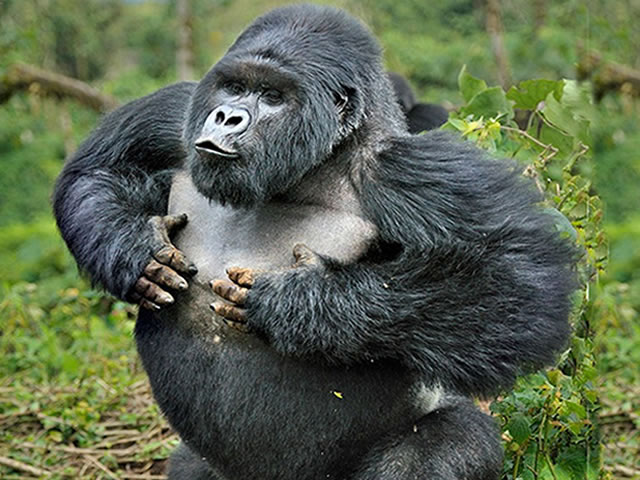It is important to note that Rwanda and Uganda are the most popular gorilla trekking destinations in the whole world. But each of these two countries has a separate gorilla trekking permit rate. Uganda charges $800 for every foreign non-resident while Rwanda charges $1500 per permit. Here are some of the reasons for the high gorilla trekking rates.
Conservation Efforts
At the heart of gorilla trekking permit costs lies the imperative of conservation. The funds generated from these permits play a pivotal role in financing conservation initiatives aimed at protecting the habitat of endangered mountain gorillas. These efforts include anti-poaching patrols, habitat restoration projects, and community development programs in the surrounding areas.
The high cost of permits reflects the substantial resources required to safeguard these majestic creatures and their fragile ecosystems. Due to these conservation efforts, Rwanda has not registered any mountain gorilla poaching incidents for the last 20 years while in Uganda, there are only a few poaching incidents that have been registered with the most popular one being the death of Rafiki.
Limited Access
Mountain gorillas inhabit remote and often rugged terrain, necessitating careful management and protection of their habitats. To minimize human impact and ensure the well-being of the gorillas, access to gorilla trekking is tightly regulated. Each day, only a limited number of permits are issued, allowing a controlled number of visitors to embark on this unforgettable journey. The exclusivity of the experience contributes to its allure but also adds to the cost of permits.
Whereas other national parks can have more than 1000 visitors in a day, gorilla trekking can only be done by a maximum of 300 people in a day for the case of Uganda while Rwanda accommodates less than 100 people a day. To cover up the deficit of the limited visitors, the trekking rates are always high.
Rarity and Demand
The mountain gorilla population is critically endangered, with only a few hundred individuals remaining in the wild. Encounters with these magnificent creatures are rare and highly coveted, driving up the demand for gorilla trekking permits.
The scarcity of permits, coupled with the allure of witnessing gorillas in their natural habitat, contributes to the premium pricing of permits. If no people were willing to pay the price charged for gorilla trekking, all gorilla parks would have sought another way to raise resources for conservation.
Economic Benefits
One of the reasons that the Uganda Wildlife Authority in Uganda gave for revising their gorilla trekking permit rate was to match what other people in the region are charging. Rwanda is charging $1500 for a gorilla trekking permit and it still sells out. It is only logical for Uganda to raise its gorilla trekking permit even though nothing much has changed.
The cost of gorilla trekking permits is a reflection of the multifaceted benefits and responsibilities associated with wildlife conservation. From funding vital conservation initiatives to supporting local economies, gorilla tourism serves as a true international benchmark for the protection of endangered species and their habitats. While the expense of permits may seem daunting, it pales in comparison to the priceless opportunity to witness these magnificent creatures in their natural environment and contribute to their conservation. By understanding the rationale behind permit costs, travelers can choose to invest in their gorilla trekking adventure with a deeper appreciation for the profound impact of their journey.



